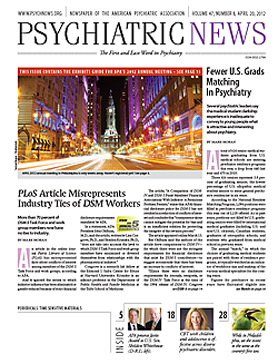Genes, Environment Combine to Raise Drug Abuse Risk in Some Adoptees
Adverse environments can be more pathogenic to individuals with high levels of genetic risk for drug abuse. Using nine Swedish databases (1961 to 2009) of adopted children and their biological and adoptive relatives, researchers from the United States and Sweden found that the risk for drug abuse was significantly elevated in the adopted offspring of biological parents who were drug abusers, in biological full and half siblings of adopted children with drug abuse, and in adoptive siblings of adopted children with drug abuse. A genetic risk index and an environmental risk index both strongly predicted the risk of drug abuse in adopted children.
“Drug abuse is an etiologically complex syndrome strongly influenced by a diverse set of genetic risk factors reflecting a specific liability to drug abuse, by a vulnerability to other externalizing disorders, and by a range of environmental factors reflecting marital instability as well as psychopathology and criminal behavior in the adoptive home,” said the researchers, who cautioned that their results should be interpreted in the context of limitations of the diagnosis of drug abuse from registries.
Hypnotic Drugs Associated With Mortality, Cancer
Researchers at the Scripps Clinic Viterbi Family Sleep Center in La Jolla, Calif., found that patients with prescriptions for hypnotics had approximately 4.6 times the hazard of dying over an average observation period of 2.5 years compared with non-users of the drugs. Among patients prescribed hypnotics, cancer incidence was increased for several specific types of cancer, with an overall cancer increase of 35 percent among those prescribed high doses.
Data were adjusted for age, gender, smoking, body mass index, ethnicity, marital status, alcohol use, and prior cancer, and the researchers described their findings as “robust with adjustment for multiple potential confounders and consistent using multiple strategies to address confounding by health status.” The increased hazard for death was present even in patients who used 18 or fewer hypnotic pills per year. Zolpidem, followed by temazepam, were the most frequently prescribed hypnotic drugs during the study. The study was conducted in the population served by the Geisinger Health System, the largest rural integrated health system in the United States. Subjects were 10,529 patients who received hypnotic prescriptions and 23,676 matched controls with no hypnotic prescriptions, followed for an average of 2.5 years between 2002 and 2007. The mean age of the patients was 54.
Amantadine Accelerates TBI Recovery
Researchers at the JFK Johnson Rehabilitation Institute in Edison, N.J., recently conducted a study of the use of amantadine—a drug previously used for the prevention and treatment of influenza and treatment of Parkinson’s disease symptoms—for severe traumatic brain injury (TBI).
Amantadine is a commonly prescribed medication for patients with disorders of consciousness who are undergoing inpatient neurorehabilitation. They enrolled 184 patients at 11 clinical sites in three countries (the United States, Germany, and Denmark) who were in a vegetative or minimally conscious state four to 16 weeks after TBI and who were receiving inpatient rehabilitation. Patients were randomly assigned to receive amantadine or placebo for four weeks and were followed for two weeks after the treatment was discontinued. The rates of functional recovery as measured by the Disability Rating Scale were assessed over the four weeks of treatment as the primary outcome.
Both groups showed significant improvement over the four-week treatment interval, but the amantadine group had significantly faster recovery and fewer dose increases at weeks 2 and 3. Although in both study groups, patients who were enrolled earlier after injury and those who were in a minimally conscious rather than a vegetative state at enrollment had faster recovery rates, the treatment effect was consistent across subgroups.
The researchers concluded that amantadine accelerated the pace of functional recovery during active treatment in patients with posttraumatic disorders of consciousness, but found that the rate of recovery in the amantadine groups slowed, and between-group behavioral differences diminished, during the wash-out period, suggesting that the response is drug-dependent. “Whether treatment with amantadine, as compared with placebo, improves the long-term outcome or simply accelerates recovery en route to an equivalent level of function remains unknown,” they wrote.
Binge Eating, Purging Decrease as Adolescents Age
Subclinical forms of eating disorders are highly prevalent, but little is known about age trends, gender differences, and distinctions among symptoms. A recent study by researchers at the Division of Mental Health of the Norwegian Institute of Public Health investigated age trends and gender differences in binge eating, purging, and nonpurging compensatory behaviors and the relationship of such behaviors to psychosocial problems.
To do so, researchers analyzed data from the national representative longitudinal study “Young in Norway,” which included individuals aged 14 to 34. They found that for both genders, a decrease occurred in the prevalence of compensatory behaviors from ages 14 to 16 to ages 23 years and over. For binge eating, however, a significant decrease was found only for females, whose binge eating also declined more markedly over time than did that of males.
A significant gender difference was detected for purging, with females at higher risk. Purging was related to particularly serious symptoms of psychosocial problems: those who purged had significantly higher levels of appearance dissatisfaction, anxiety, depressive symptoms, alcohol consumption, self-concept instability, and loneliness than those with symptoms of other forms of disordered eating.
The researchers called for future studies “aimed at finding factors that are potent in distinguishing individuals who experience disordered eating symptoms which are limited to the adolescent years from those who suffer from longer lasting symptoms which persist into adulthood.”
Abebe D, Lien L, Torgersen L, et al. “Binge Eating, Purging, and Nonpurging Compensatory Behaviors Decrease From Adolescence to Adulthood: A Population-Based, Longitudinal Study.” BMC Public Health. 2012. 12:32. www.biomedcentral.com/1471-2458/12/32 